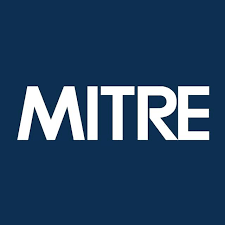What is OKR? A goal-setting framework for thinking big
To make your goals measurable, you’ll have to consider each objective and the results you want. Since goals are inherently qualitative, you want to bring in an objective way to measure success.

To make your goals measurable, you’ll have to consider each objective and the results you want. Since goals are inherently qualitative, you want to bring in an objective way to measure success. Each KR should also have an owner on the team—that person is responsible for tracking progress and finding ways to achieve the desired outcome.
How often should OKRs be reviewed?
There are no hard and fast rules about when to review OKR progress, but it’s typically recommended to review them weekly with key stakeholders, and quarterly with a broader audience.
For most companies, a weekly progress review will include a check in with the team dedicated to that goal or project. This is a time to involve the people closest to the project or goal, to narrow down the smaller details, and to check in with everyone involved in the overall progress. These meetings should be held consistently leading up to the quarterly check-ins that involve a wider group of people invested in OKR progress.
When it comes time for the quarterly check-ins, it’s important to have a clear agenda that outlines who will present progress updates and what teams will be involved. There should also be enough time at the end for a Q&A and constructive feedback on OKR success. It’s important to foster an open environment where everyone feels comfortable offering feedback, asking questions, and raising any potential concerns.
What makes a good OKR?
OKRs are meant to be flexible, which means they can adjust with your priorities. Once you establish your OKRs, if you feel confident you can hit a KR, then Atlassian suggests you increase the target by upward of 30%. If you aren’t sure you’ll meet your KR targets, that means you probably set your sights high enough.
Every month you should evaluate and check-in on OKRs to make sure everything is moving along. You’ll want to predict the end-of-quarter score for each KR to judge how it’s tracking, to catch any problems or to adjust priorities if necessary. Average the score for all your KRs and that’s your overall score for that specific objective.
Benefits of using OKR
OKRs are inherently designed to help companies move forward with a strategic plan to grow and succeed as a business. Some of the benefits of OKRs include:
- Aligning employees with business goals and establishing productivity around those goals
- Optimizing resource management and allocation
- Establishing accountability, transparency, and goal measurement
- Identifying problems and their root cause, and allowing you to address potential roadblocks
- Creating a better environment for informed decision-making
- Implementing weekly progress check-ins structured around clear and specific goals
- Effectively tracking goal progress and ensuring it’s aligned with business goals
OKR best practices
OKRs are used for both individual and team goal-setting to help knowledge workers prioritize work in fast-paced environments, like the tech industry, says Rekhi, so it’s important to stay focused on the most important priorities.
“OKRs are valuable as a tool to prioritize initiatives and define the desired outcomes from those goals,” says Rekhi. “OKRs establish the purpose—the objective—and the desired outcomes you want to affect with your work—the key results.”
Atlassian further offers the following checklist for setting OKRs:
- Put the customer first
- Don’t skimp on ambition
- Tie OKRs to larger company goals
- Just enough Os and KRs is enough
- If you can’t measure it, it’s not a good KR
- KRs are outcomes—not tasks
- Assign KR owners
When your OKRs are complete, you’ll want to evaluate them to figure out what worked and what you need to change in the future. Ask yourself and your team if your objectives were ambitious enough, key results were measurable, any OKRs were ignored, they remain aligned with the business strategy, and the organization felt invested in the OKRs. You’ll want to establish what you learned and how to apply that to the next quarter.









